
Catalan football has historically been dominated by one club with FC Barcelona having grown to become the largest symbol of Catalan identity over the decades. However, anyone planning a football trip to Catalunya has plenty of options besides the standard game and tour at Camp Nou.
In this Catalunya football travel guide, we’ll also give you the lowdown on the smaller clubs across the region, with tips for getting around and buying tickets.
Catalunya football map
Catalunya is split into four separate provinces. By far the most famous and the one with the largest population and most football teams is Barcelona. Within the metropolitan area of the Catalan capital you will find top-flight clubs FC Barcelona and Espanyol.
Historic third-tier outfit CE Europa are also based within the city in the popular Vila de Gracia neighbourhood, and they are in the same league as Sabadell who are located outside Barcelona, but only around 30 minutes away by rail.
There are only two other Catalan clubs currently in the top three tiers of the Spanish football pyramid. Girona are heading into their fourth season in a row in the top flight, while Gimnastic Tarragona narrowly missed out on promotion from the Primera Federacion last season, and will therefore remain in the third tier for the 2025/26 campaign.
Catalan football teams
The Barcelona clubs
FC Barcelona
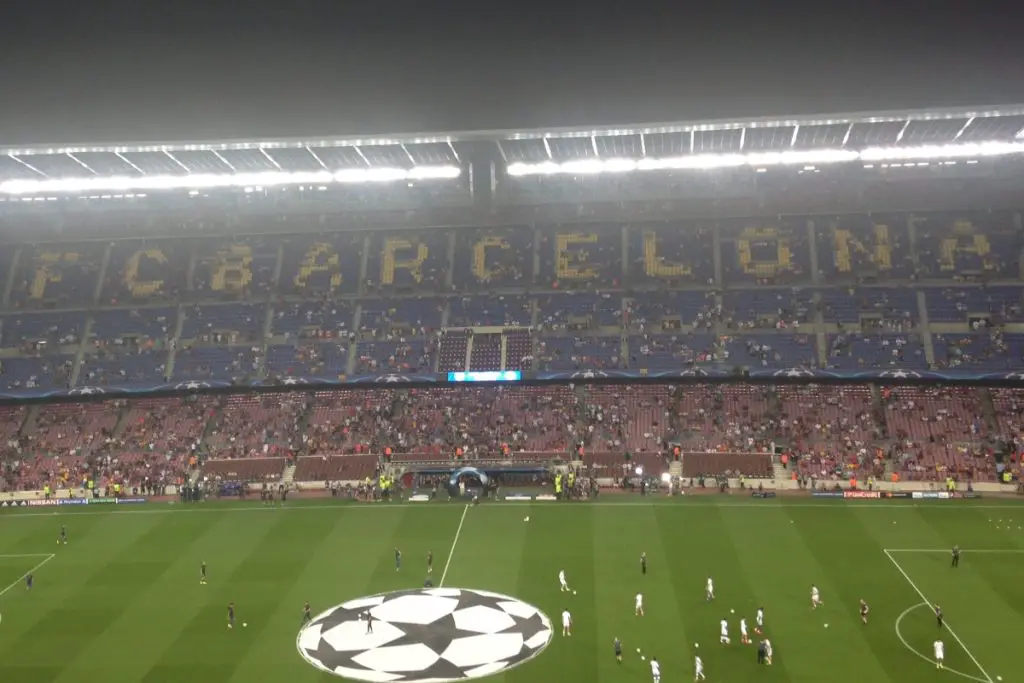
Stadium – Camp Nou
Capacity – ~60,000 (initial capacity for 2025/26, will ultimately reach 105,000)
Nearest station – Palau Reial, Les Corts, Collblanc or Badal (Barcelona metro)
With an eventual capacity of more than 100,000, Camp Nou will be the largest stadium in Spain and the largest in Europe when expensive redevelopment work is complete. It has been closed for the past two years, but will be Barcelona’s home again for the 2025/26 season, although with a reduced capacity initially.
Barca have spent the last two two seasons at the Estadi Olimpic on the Montjuic Hill which overlooks the city centre and was the centre-piece of the 1992 Olympic Games. However, they’ll be very happy to get back to their traditional home in Les Corts.
How to buy tickets for Barcelona matches:
It’s hard to assess the likely demand for FC Barcelona tickets in the 2025/26 season, but the assumption is that back at Camp Nou but not at full capacity, they might be harder to come than was the case in the past two years when many locals opted not to take up their season tickets at the relatively inaccessible Estadi Olimpic.
Subject to availability, you will be able to buy tickets online via their website with prices for league matches typically starting at around €70 in recent seasons, although that does rise for higher profile games such as Champions League fixtures. Things will become much easier when the expansion work is complete (likely to be at some point in 2026), but if you’re struggling to get tickets for Barca matches prior to that, there are alternative options.
You can get official hotel-and-ticket packages for Barcelona games in advance via Sportsbreaks, while there are also options available on footballtravel.com.
You can also use resale platforms like Hellotickets to look for tickets, but any purchases from third-party sites are made at your own risk.
Espanyol
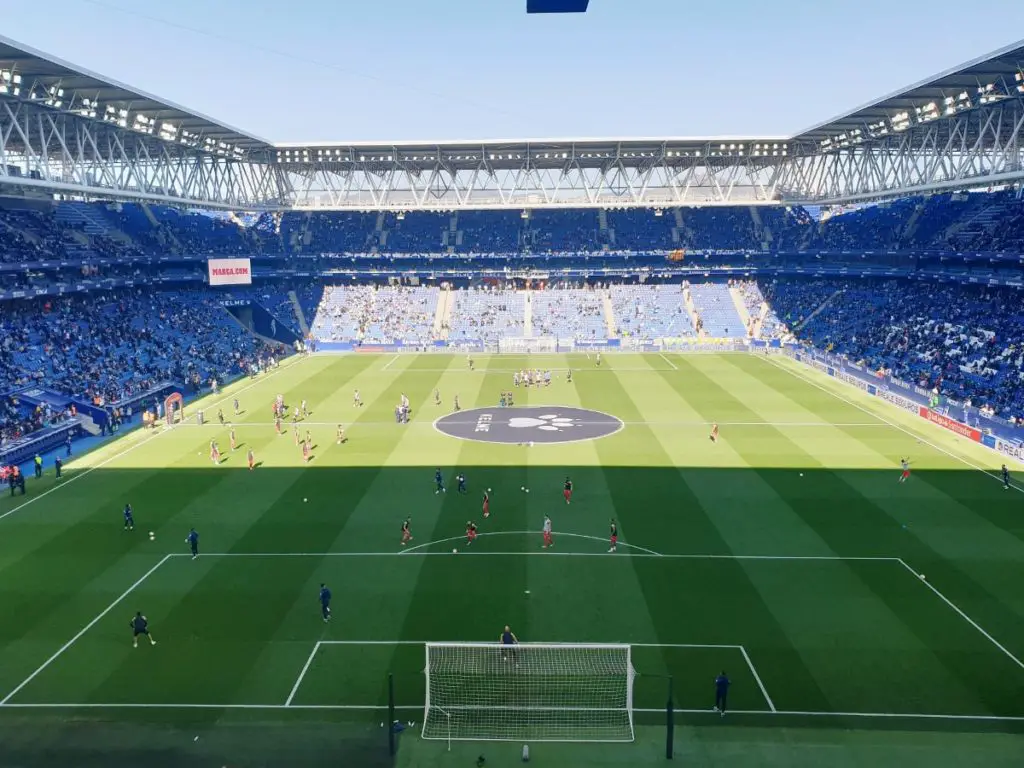
Stadium – RCDE Stadium
Capacity – 40,000
Nearest station – Cornella-Riera or Cornella (Rodalies de Catalunya)
Espanyol are Barcelona’s second club and in truth it is a distant second. As their name suggests, they don’t embrace the Catalan identity in the same way as their rivals, and are frequently the butt of jokes amongst Barca supporters who claim Espanyol followers are just Real Madrid fans in disguise.
Many Pericos would bitterly reject that of course, and Espanyol do have a long history of their own having never spent more than one season outside the top flight. They’ve been relegated on a number of occasions, including in 2023, but they secured an immediate return to LaLiga once more and stayed up under Manolo Gonzalez last term.
While you can reach their RCDE Stadium by using the Barcelona metro, it’s a long journey with Espanyol now based outside of the city’s official limits in Cornella. It’s better to take the faster Rodalies de Catalunya trains and from the centre of Barcelona, you can reach the modern 40,000-capacity arena in around half an hour if starting out from Placa de Catalunya or Placa d’Espanya.
How to buy tickets for Espanyol matches:
Espanyol’s average crowds were just over 25,000 during LaLiga 2024/25, so it’s not normally difficult to get tickets for their games and they are certainly cheaper than those of their city rivals. Check their website to secure a seat for their upcoming matches.
The smaller Barcelona clubs
The province of Barcelona is also home to numerous smaller clubs. The biggest and most interesting of the bunch is CE Sabadell. They were formed way back in 1903 and have spent 14 seasons in the top flight, although they haven’t been there since 1988. Since then, they’ve hovered between the second and fourth tiers. An easier way to catch Primera Federacion (third tier) football would be to head to Europa’s Nou Sardenya stadium close to Alfons X station on the Barcelona metro.
Badalona, Cerdanyola del Valles, Manresa, Sant Andreu, Cornella and Terrassa are other options for lower-league football in and around Barcelona, with UE Sant Andreu perhaps the biggest of those.
The other Catalan clubs
Girona
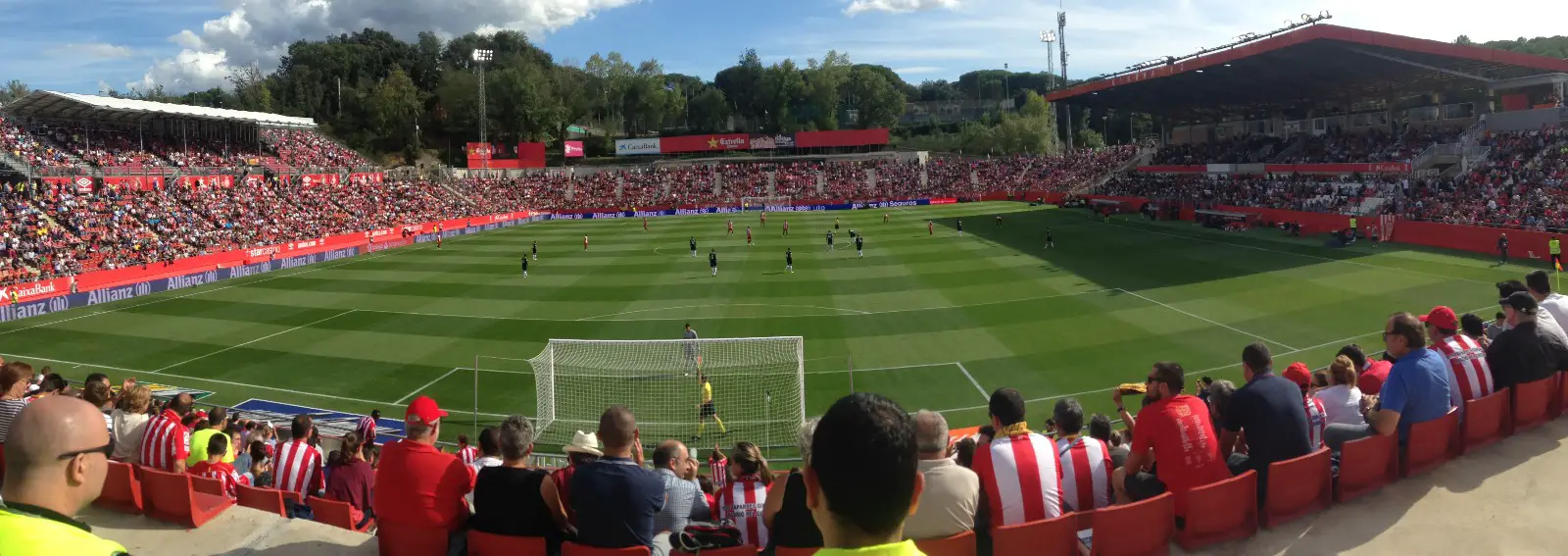
Stadium – Estadi Montilivi
Capacity – 14,624
Nearest station – Girona train station
Girona may be a top-flight club that carries the name of their city and indeed province, but this has never historically been a big football area. The club spent much of the 2000s in the old Tercera Division, before a dramatic rise in the 2010s which culminated in them reaching the Primera for the first time in 2017. Relegation followed in 2019, but after three seasons in the second tier, they were promoted again and went on to secure a stunning third-place finish in LaLiga 2023/24.
Their fanbase is still quite small, and a strong Catalan identity, as well as links to Manchester City, mean they aren’t universally loved within Spain. However, Girona is a lovely place to visit and they’ll be hoping to bounce back in 2025/26 after a disappointing campaign that saw them struggle in both LaLiga and in their first ever European competition.
How to buy tickets for Girona matches:
To visit the Estadi Montilivi yourself, you can potentially fly into Girona-Costa Brava airport to the south of the city or hop on one of the regular trains from Barcelona (the high-speed options take just 40 minutes to travel from Barcelona-Sants to Girona’s railway station). The football stadium is on the outskirts of town with just over a 30-minute walk or a short bus or taxi ride needed to reach it.
Their website has a good English section which enables you to see upcoming games and whether tickets are yet on sale. Prices tend to start at slightly over €30 when bought online, with much higher prices and demand likely for the visits of Barcelona or Real Madrid.
Gimnastic de Tarragona
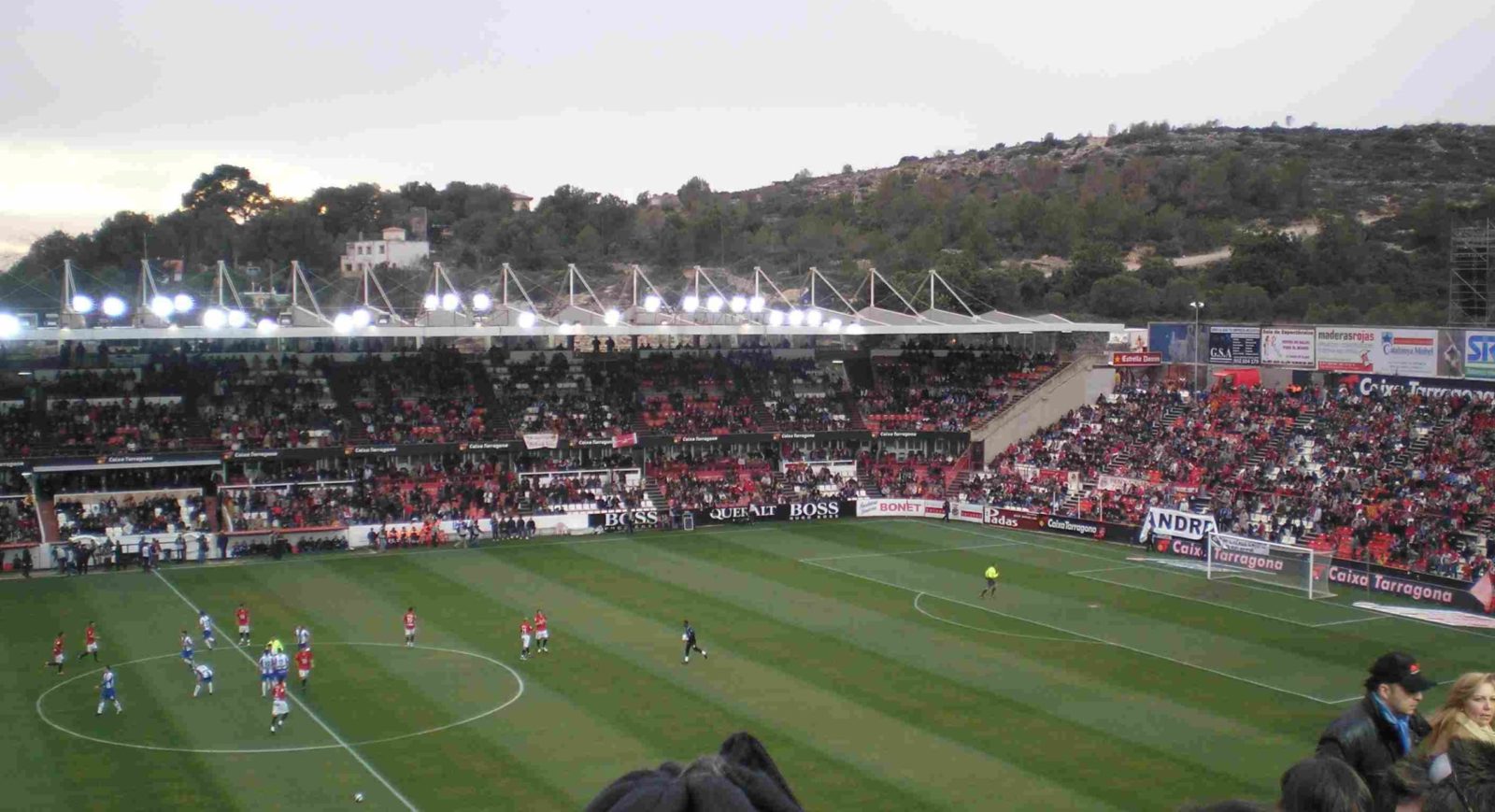
Stadium – Nou Estadi Costa Daurada
Capacity – 14,591
Nearest station – Tarragona train station
Gimnastic de Tarragona have traditionally been the third-biggest club in Catalunya after the two Barcelona sides, although they have been very much outperformed by Girona in recent years. Commonly known as Nastic, they spent most of the 21st Century in the Segunda Division before dropping down to the third tier in 2019 where they’ve been ever since, with play-off heartbreak denying them promotion back to the Segunda Division in 2025.
Tarragona is an attractive coastal city with some gorgeous beaches and it can be reached easily by flying into nearby Reus Airport, or by taking a regional train from Barcelona (just over an hour). It’s a very pleasant 45-minute walk uphill from the train station to the Nou Estadi through the old Roman parts of the city, but you may prefer to take a bus or taxi and walk back.
How to buy tickets for Nastic matches:
Demand to watch Primera Federacion football is not great across Spain, so you should easily be able to just show up on matchdays and buy a ticket with the stadium’s near 15,000 capacity more than fit for purpose. They also have an online ticketing platform.
The Best of the rest
The only really notable club in the fourth and by some distance least-visited Catalan province is Lleida Esportiu who play at the 13,500 capacity Camp d’Esports. Officially they are a new club, founded in 2011 out of the ashes of UE Lleida who had twice featured in the top flight and twice been relegated (1950/51 & 1993/94).
They play in the Segunda Federacion (fourth tier) and you can also find Catalan representation in that league from UE Olot (Girona province) and Reus FC (Tarragona province).
Finally, we should give a mention to ambitious FC Andorra, a club owned by Barcelona’s Gerard Pique who will play in the 2025/26 Segunda Division. While Andorra is a tiny principality rather than a part of Catalunya, they do speak Catalan there, and if you fancy a trip to see them play, there are several daily buses from Barcelona Nord Station that take a little over three hours to reach Andorra la Vella, nestled high up in the Pyrenees.
Groundhopping in Catalunya – Getting around
The city of Barcelona has a large metro (underground) network that will transport you to basically anywhere you need to get in the city. You can get to the current stadiums of Barcelona and Espanyol, as well as the likes of Europa and Badalona by using the metro and all those clubs fall within zone one of the network with single tickets costing €2.65, while you can get a 10-journey pass for €12.55. This is also eligible for use on buses, trams and suburban trains within Zone 1 (excluding metro services and express buses to/from the airport).
Catalunya also has an extensive rail network known as the Rodalies de Catalunya with 18 separate lines. This connects Barcelona with a range of towns and cities across the region. It’s not as regular as the metro, but the main lines in and out of Barcelona still run every ten minutes or so.
It’s a quicker way to reach the clubs on the outskirts of the city (you can use the same 10-journey ticket providing you stay in zone one) and it is also the most affordable way to get around the wider region. If you’re planning a big trip taking in a range of games across Catalunya, it’s a good idea to familiarise yourself with the Rodalies network map, which offers affordable travel from Barcelona to cities such as Girona, Tarragona, Sabadell and Lleida.
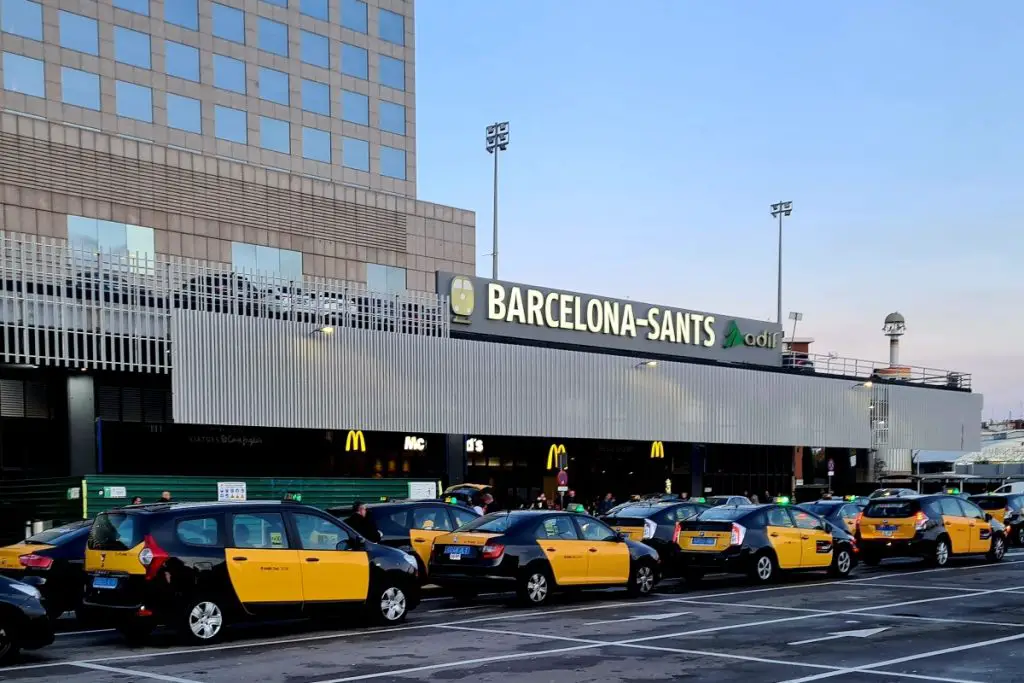
If you are more worried about time than money, then you can use the national trains (buy tickets on renfe.com) to get between the main cities.
From Barcelona-Sants Station, it’s only about an hour to Lleida and 40 minutes to Girona via the faster trains. There are no high-speed trains to the centre of Tarragona, but you can still reach it in a little over an hour via the very scenic regional express line which hugs the coast, while some high-speed AVE services between Barcelona and Madrid stop at Camp de Tarragona station which is a highly inconvenient 13 km from the city itself.
With such a large and affordable rail network, there’s not much need to travel by bus, but there are bus lines covering most major routes too.
Away from the football
Catalunya really does have a little bit of everything, so there’s a huge amount to see and do away from the football.
The city of Barcelona is the beating heart of the region and one of Europe’s finest cities. It is packed with the architecture of Antoni Gaudi with the world-famous Sagrada Familia the most recognisable landmark in town. Book your tickets online if you plan to visit to save money and not waste time queuing.
The beautiful Park Guell is another major highlight with great views across the city, while there are a host of lively districts to explore. While parts of the city are completely overrun by tourism, it’s not impossible to get a taste for the real Barcelona if you know where to look.

The city does have beaches, but the best Catalan ones lie well away from Barcelona. The Costa Brava which runs through the province of Girona to the French border is full of picturesque beach towns and fishing villages, while you can also find some gorgeous and much quieter beaches in the area around Tarragona. There are also a few livelier tourist resorts such as Lloret de Mar and Salou if you’re looking to fit some football around a holiday.
The actual cities of Girona and Tarragona are well worth exploring for a day too. Both have pretty old towns with Girona’s riverside setting and colourful buildings making it one of the most attractive in Spain. Tarragona is another historic city, full of little plazas while its well-preserved Roman amphitheatre is its main attraction.
There are also loads of great hiking routes in Catalunya which is considerably more hilly and spectacular than much of Spain. Close to Barcelona, the unusual rock formation and mountain-top monastery at Montserrat, makes it a popular day-trip destination. There are plenty of other great options though where you can explore the scenic countryside at your own pace, and if you really want to escape the crowds, head to the quieter province of Lleida, the gateway to the Pyrenees.